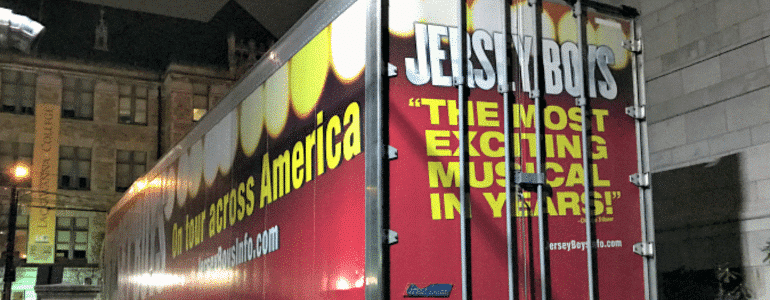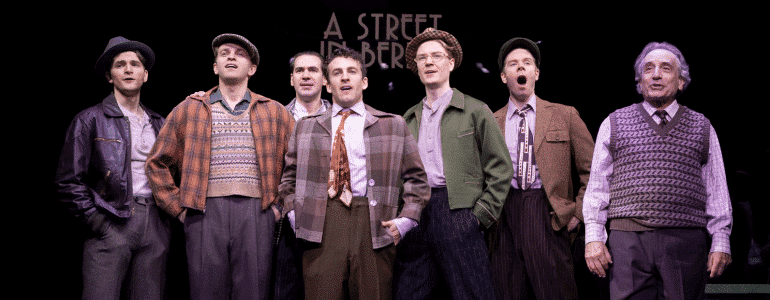The mission of music in a musical is . . .
I went to see a show the other night and found myself sitting right next to an old fuddy-duddy (I do realize that by using the term “fuddy-duddy,” I am probably now one myself). He was buttoned-up and scowling from the moment he walked into the hallowed halls of the theater.
He was absolutely silent during Act I. He didn’t laugh. Didn’t slump. Just kind of stared ahead like he was preparing for a role in the musical version of Awakenings.
And then, during the middle of the first act finale, Mr. Duddy started shifting around in his seat a bit. At first I thought he was preparing for an early exit to the bathroom and to secure a place in the front of the line for a $9 coke. But then I realized he wasn’t shifting at all.
He was tapping his foot.
Yep, like Robert De Niro in Awakenings, Mr. Duddy started to wake up slowly. You see, the music was rockin’ at this point . . . more than it had the entire first act, and the musical was starting to really take off (a little late, of course). And somehow it had melted Mr. Duddy’s wax figure state, and his foot was moving to the beat. I stopped watching the show for a moment, as I watched Duddy’s foot move, and then slowly but surely that energy crept up his entire body, practically loosened his tie for him and then . . . well would you look at that . . . a smile.
The music literally got into his body. It moved him. And that, my friends, is the mission of music in a musical.
It has to move you. Obviously it doesn’t have to physically move you all the time . . . but when it gets you tapping your feet, bobbing your head, or moves you to tears, you know that you are literally synced up with what is happening on that stage.
And of course there is a way to emotionally move you as well . . . when the sound of what is being sung has you moving like a tornado, but it’s all happening inside the audience member. When actually they are moved so much . . . they can’t physically move. You know what I’m talking about, right?
I read and listen to too many musicals where the music doesn’t move me at all. It’s just there, trying to tell a story, but falling short because it doesn’t reach out and grab me and pull me in. And worse than that? When the music is trying to “teach” . . . or be smart. The Sondheim Syndrome, I call it. You can’t be smart. And you can’t try to teach. You can just tell your story and move your audience, and if you’re Sondheim, great . . . but I’d rather you just be you. (Rent is one of the simplest musicals written in the last two decades, and one of the best and most moving.)
I’ve said this before, but I will say it again . . . It’s called a musical. It’s not a book-ical or even a lyric-ical. It’s a MUSIC-al. And that means that your music just may be the biggest weapon you have to snare that audience and make them fall in love with your story.
But if you’re not moving them . . . they’ll move on to something else.
(Got a comment? I love ‘em, so comment below! Email Subscribers, click here then scroll down to say what’s on your mind!)
_ _
FUN STUFF:
– Win two free tickets to Rubble at The Fringe Festival. Click here.
– Read this blog with ease on your iPhone! Download the Producer’s Perspective app! Click here or visit the app store!
Podcasting
Ken created one of the first Broadway podcasts, recording over 250 episodes over 7 years. It features interviews with A-listers in the theater about how they “made it”, including 2 Pulitzer Prize Winners, 7 Academy Award Winners and 76 Tony Award winners. Notable guests include Pasek & Paul, Kenny Leon, Lynn Ahrens and more.















